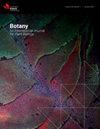Meadoway:在未充分利用的输电线路走廊中创建原生草甸
IF 1.3
4区 生物学
Q3 PLANT SCIENCES
引用次数: 0
摘要
植物学,提前印刷。 在加拿大安大略省,有超过 3 万公里的输电线路走廊。通过适当的规划、持续的维护和监测,这些走廊有可能变成原生草地,提供连接自然遗产系统的重要通道,支持野生动物的活动,同时促进生物多样性、自然功能和生态系统的健康。2019 年,在多伦多东部的加蒂诺水电走廊(Gatineau Hydro Corridor)进行了播种试验,那里正在开展一个长期的草甸创建项目(The Meadoway),以评估除草剂处理(草甘膦)、播种方法和播种季节对播种成功率的影响,目的是为特定地点的草甸创建技术提供信息。混合种子包括各种本地禾本科植物和草本植物,其中以铜锈草(Sorghastrum nutans)、大蓝茎(Andropogon gerardii)、小蓝茎(Schizachyrium scoparium)和开关草(Panicum virgatum)为主。总体而言,秋季或冬季使用除草剂播种的成功率最高。人工播种和使用播种机的效果没有差别。这项工作的结果为提高播种成功率的有效播种技术提供了宝贵的见解,同时也凸显了现场实验为草地创建技术提供依据的益处。本文章由计算机程序翻译,如有差异,请以英文原文为准。
The Meadoway: native meadow creation in underutilized transmission line corridors
Botany, Ahead of Print.
Across Ontario, Canada, there are over 30 000 km of transmission line corridors. With proper planning and ongoing maintenance and monitoring, these corridors have the potential to be transformed into native meadow, offering vital pathways connecting natural heritage systems and supporting wildlife movement, while promoting biodiversity, natural functions, and ecosystem health. In 2019, seeding trials were established in the Gatineau Hydro Corridor in east Toronto where a long-term meadow creation project (The Meadoway) is ongoing, to evaluate the effectiveness of herbicide treatment (glyphosate), sowing method, and sowing season on seeding success with the goal of informing site-specific meadow creation techniques. Seed mixes included a variety of native grasses and forbs and were dominated by copper savannah grass (Sorghastrum nutans), big bluestem (Andropogon gerardii), little bluestem (Schizachyrium scoparium), and switch grass (Panicum virgatum). Overall, fall or winter seeding with herbicide led to the highest seeding success. There was no difference in the effectiveness of hand seeding or using the seed drill. The results of this work provide valuable insights into effective seeding techniques to improve seeding success and also highlight the benefits of in situ experimentation to inform meadow creation techniques.
Across Ontario, Canada, there are over 30 000 km of transmission line corridors. With proper planning and ongoing maintenance and monitoring, these corridors have the potential to be transformed into native meadow, offering vital pathways connecting natural heritage systems and supporting wildlife movement, while promoting biodiversity, natural functions, and ecosystem health. In 2019, seeding trials were established in the Gatineau Hydro Corridor in east Toronto where a long-term meadow creation project (The Meadoway) is ongoing, to evaluate the effectiveness of herbicide treatment (glyphosate), sowing method, and sowing season on seeding success with the goal of informing site-specific meadow creation techniques. Seed mixes included a variety of native grasses and forbs and were dominated by copper savannah grass (Sorghastrum nutans), big bluestem (Andropogon gerardii), little bluestem (Schizachyrium scoparium), and switch grass (Panicum virgatum). Overall, fall or winter seeding with herbicide led to the highest seeding success. There was no difference in the effectiveness of hand seeding or using the seed drill. The results of this work provide valuable insights into effective seeding techniques to improve seeding success and also highlight the benefits of in situ experimentation to inform meadow creation techniques.
求助全文
通过发布文献求助,成功后即可免费获取论文全文。
去求助
来源期刊

Botany
生物-植物科学
CiteScore
2.20
自引率
9.10%
发文量
48
期刊介绍:
Botany features comprehensive research articles and notes in all segments of plant sciences, including cell and molecular biology, ecology, mycology and plant-microbe interactions, phycology, physiology and biochemistry, structure and development, genetics, systematics, and phytogeography. It also publishes methods, commentary, and review articles on topics of current interest, contributed by internationally recognized scientists.
 求助内容:
求助内容: 应助结果提醒方式:
应助结果提醒方式:


